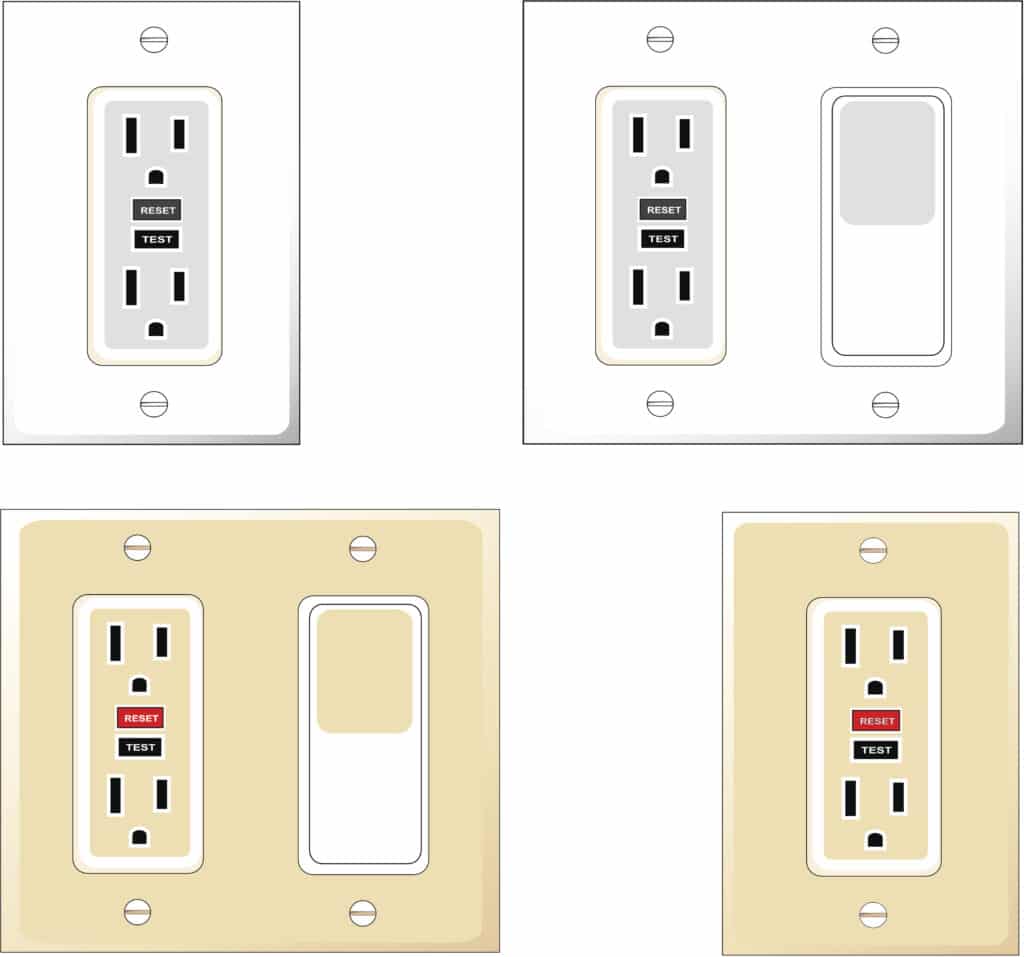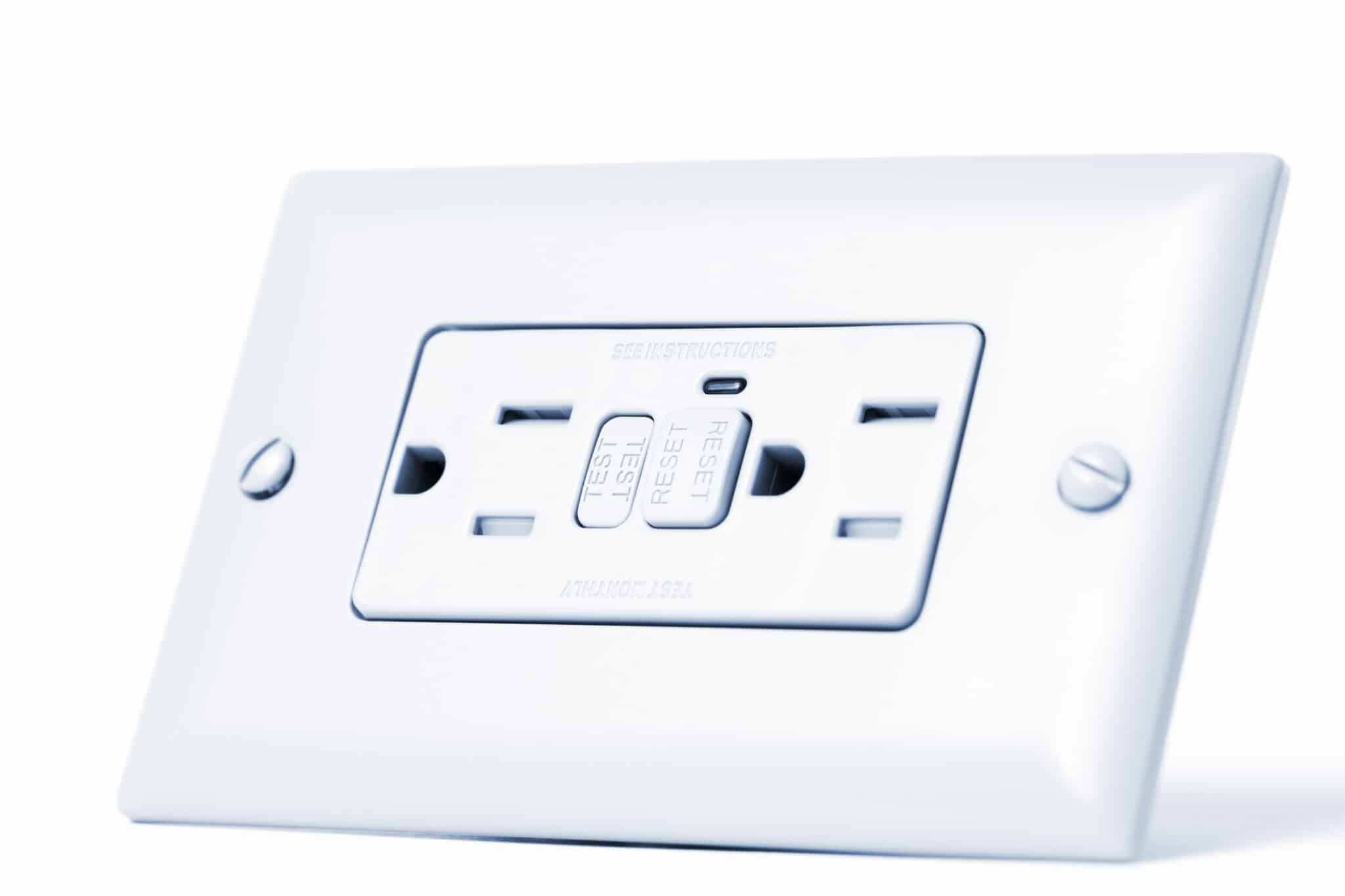Have you ever wondered how to keep your home safe from electrical hazards? Ensuring electrical safety in your home is paramount, and one of the most effective ways to do this is by using GFCI outlets. These outlets are essential for preventing electrical shocks and protecting your home from potential fire hazards.
In this article, we will explore what GFCI outlets are, how they work, and why they are crucial for your safety. Electrical safety is a critical aspect of maintaining a secure and comfortable home. With advancements in technology and increased awareness of potential hazards, homeowners are now more equipped than ever to safeguard their living spaces.
Importance of Electrical Safety in Homes
Maintaining electrical safety is essential to prevent accidents and ensure the well-being of your family. Electrical hazards can lead to serious injuries, fires, and even fatalities.
By understanding and implementing proper safety measures, homeowners can mitigate these risks effectively.
GFCI outlets play a pivotal role in enhancing home safety by detecting ground faults and interrupting the flow of electricity, thereby preventing potentially dangerous situations.
Ground Fault Circuit Interrupter (GFCI) outlets are designed to protect people from electric shock and reduce the risk of electrical fires.
These outlets are particularly important in areas of your home where electrical circuits may come into contact with water, such as bathrooms, kitchens, and outdoor spaces.
GFCI outlets work by continuously monitoring the electrical current flowing through a circuit. If they detect even a slight difference between the current entering and leaving the circuit, they quickly shut off the power, often in as little as 1/40th of a second.
This rapid response can be life-saving, especially in environments where water and electricity are present.
What Is a GFCI Outlet?
A Ground Fault Circuit Interrupter (GFCI) outlet is a specialized electrical outlet designed to protect individuals from electrical shock. It achieves this by constantly monitoring the amount of current flowing through the circuit.
If there is an imbalance, which indicates a leakage current, the GFCI outlet will quickly shut off the power to prevent harm.
This feature makes these outlets a vital safety component in any home, particularly in areas where electrical circuits are more likely to come into contact with water, such as bathrooms, kitchens, and outdoor spaces.
The primary function of a GFCI outlet is to detect ground faults. A ground fault occurs when the electrical current takes an unintended path to the ground. This can happen if there is damage to the wiring, or if an appliance gets wet.
By interrupting the circuit when a ground fault is detected, the GFCI outlet helps prevent severe electrical shocks and reduces the risk of electrical fires. This proactive safety measure is essential for protecting both people and property.
How Do GFCI Outlets Work?
Internal Mechanism
GFCI outlets are equipped with sensors that measure the current flowing through the hot and neutral wires. Under normal circumstances, the current flowing in both wires should be equal.
However, if there is a ground fault, meaning some of the current is flowing through an unintended path (such as water or a human body), the GFCI detects this discrepancy and interrupts the circuit almost instantaneously.
The outlet contains a small transformer and a circuit board that continuously compares the current going out through the hot wire and returning through the neutral wire.
Detection of Electrical Imbalances
When the GFCI outlet detects a difference as small as 4-5 milliamps between the current entering and leaving the circuit, it trips the internal switch, cutting off the electricity.
This rapid response can prevent severe electric shocks and potential electrocution. The outlet’s sensitivity is crucial in preventing injuries in environments where electricity and water are likely to mix.
This detection and interruption process happens in milliseconds, providing a critical safety buffer that can prevent dangerous incidents before they occur.
The effectiveness of GFCI outlets in detecting and responding to ground faults makes them an essential addition to modern homes.
Their ability to protect against electrical shocks, reduce fire hazards, and ensure compliance with current safety standards underscores their importance in maintaining a safe living environment.

Photo from iStock – Credit: JDFiend
The Importance of GFCI Outlets
Prevention of Electrical Shocks
One of the primary benefits of using ground fault circuit interrupters is their ability to prevent electrical shocks. By continuously monitoring the electrical current and cutting off power when an imbalance is detected, these devices protect individuals from potentially life-threatening situations.
This is particularly crucial in areas like bathrooms, kitchens, and outdoor spaces, where water and electricity are likely to come into contact.
Reduction of Fire Hazards
Electrical fires can be devastating, causing significant property damage and posing serious safety risks. Ground fault circuit interrupters help reduce the risk of electrical fires by detecting ground faults and shutting off the power before overheating and sparking can occur.
This proactive measure ensures that minor electrical issues do not escalate into dangerous fire hazards.
Protection of Appliances
In addition to protecting people, these devices also safeguard your appliances. Electrical surges and imbalances can damage sensitive electronic devices, leading to costly repairs or replacements.
By maintaining a stable electrical flow and preventing surges, ground fault circuit interrupters extend the lifespan of your appliances and electronic equipment, saving you money in the long run.
Compliance with Modern Safety Standards
Ground fault circuit interrupters are now a standard requirement in modern building codes, reflecting their importance in ensuring electrical safety. Installing these devices in your home not only helps you comply with these regulations but also enhances the overall safety and value of your property.
Meeting these safety standards is particularly important if you are planning to sell your home, as it can be a key selling point for potential buyers.
Locations Requiring GFCI Outlets
The National Electrical Code (NEC) specifies where GFCI outlets are required to ensure maximum safety. According to the NEC, GFCI protection is mandatory in several key areas of the home, including bathrooms, kitchens, garages, basements, and outdoor spaces.
These locations are identified as high-risk areas where the combination of electricity and moisture can lead to dangerous situations. The NEC updates its guidelines regularly to reflect new safety research and advancements in electrical technology, making compliance with these standards crucial for modern homes.
Essential Areas for GFCI Installation
To comply with NEC requirements and enhance home safety, GFCI outlets should be installed in the following areas:
- Bathrooms: Where water and electricity frequently interact.
- Kitchens: Near sinks and countertops where water exposure is common.
- Garages: To protect against potential hazards in a typically damp environment.
- Basements: Especially if the basement is unfinished or prone to moisture.
- Outdoor Spaces: Including patios, decks, and areas with exterior outlets.
By ensuring that these outlets are installed in critical areas, homeowners can significantly reduce the risk of electrical accidents and enhance the overall safety of their living spaces.
Proper installation in these locations not only complies with NEC requirements but also provides peace of mind, knowing that the home’s electrical system is safeguarded against potential hazards.
Types of GFCI Outlets
Standard GFCI Outlets
Standard GFCI outlets are the most common type and are designed to replace traditional outlets. They have built-in sensors that detect ground faults and quickly shut off power to prevent electrical shocks.
These outlets are easily recognizable by their “Test” and “Reset” buttons, which allow homeowners to ensure the GFCI is functioning correctly.
These buttons provide a simple way to test the outlet’s functionality; pressing the “Test” button should cause the outlet to trip, cutting off power, and pressing the “Reset” button restores power to the outlet.
This regular testing helps maintain the safety of the outlet and ensures it remains effective in preventing electrical shocks.
Weather-Resistant GFCI Outlets
Weather-resistant GFCI outlets are specifically designed to withstand harsh outdoor conditions. They have a durable construction that protects against moisture, temperature extremes, and UV radiation, making them ideal for outdoor installations.
These outlets are often installed in areas exposed to the elements, such as outdoor patios, decks, and gardens. They provide the same ground fault protection as standard GFCI outlets but with added durability to handle environmental stress.
GFCI Circuit Breakers
GFCI circuit breakers provide ground fault protection for an entire circuit, rather than a single outlet. Installed in the electrical panel, these breakers protect all outlets and devices on the circuit.
GFCI circuit breakers are an excellent option for comprehensive protection in high-risk areas, such as kitchens or outdoor spaces, ensuring that all connected devices are safeguarded against electrical faults.
By installing a GFCI circuit breaker, homeowners can protect multiple outlets from ground faults with a single device, simplifying the process of maintaining electrical safety.
This approach is particularly beneficial in areas with heavy electrical use, offering broad protection and peace of mind.

Installation of GFCI Outlets: Why Professionals Matter
Step-by-Step Installation Guide
While installing a GFCI outlet might seem straightforward, it involves working with your home’s electrical system, which can be hazardous. Here’s a basic outline of the installation process:
- Turn off the Power: Before starting, ensure the power to the circuit is turned off at the breaker panel.
- Remove the Existing Outlet: Unscrew and remove the cover plate and the old outlet.
- Connect the Wires: Attach the wires to the appropriate terminals on the GFCI outlet. Typically, the black (hot) wire connects to the brass terminal, the white (neutral) wire to the silver terminal, and the ground wire to the green terminal.
- Mount the GFCI Outlet: Secure the GFCI outlet into the electrical box with screws.
- Test the Outlet: Turn the power back on and test the GFCI outlet using the “Test” and “Reset” buttons to ensure it’s working properly.
Common Installation Mistakes
Improper installation can render a GFCI outlet ineffective or even dangerous. Here are some common mistakes to avoid:
Incorrect Wiring: One of the most frequent mistakes is misconnecting the line and load wires. The line wires bring power into the outlet, while the load wires carry power to additional outlets. If these wires are reversed, the GFCI outlet will not function correctly, leaving the connected outlets unprotected from ground faults. This can be particularly hazardous in wet areas such as bathrooms and kitchens.
Skipping Grounding: Another critical mistake is failing to connect the ground wire. The ground wire is essential for the safe operation of the GFCI outlet, as it provides a path for electrical current to follow in the event of a fault. Without proper grounding, the GFCI outlet cannot effectively prevent electrical shocks, which significantly compromises safety.
Overloading the Outlet: Connecting too many devices to a single GFCI outlet is another common error. A GFCI outlet is designed to protect a specific number of devices from ground faults. Overloading an outlet with too many devices can cause it to trip frequently, which not only interrupts power but can also wear out the outlet prematurely.
Safety Tips and Best Practices
To ensure the safe and effective use of a GFCI outlet, follow these tips and best practices:
Regular Testing: It is essential to test a GFCI outlet monthly using the built-in “Test” and “Reset” buttons. To test, press the “Test” button; the outlet should trip, cutting off power. Then press the “Reset” button to restore power. Regular testing helps ensure the outlet is functioning correctly and continues to provide protection against electrical shocks.
Professional Installation: Hiring a licensed electrician to install GFCI outlets is highly recommended, especially for complex scenarios or if you are unsure about the installation process. Professional electricians have the necessary expertise to ensure that the outlets are installed correctly and safely, adhering to all relevant codes and standards.
Follow NEC Guidelines: Always ensure that all GFCI installations comply with the latest National Electrical Code (NEC) requirements. The NEC provides comprehensive guidelines for the safe installation and use of electrical systems, including a GFCI outlet. Following these guidelines helps to maintain the highest safety standards and ensures that the GFCI outlet functions as intended.
By being aware of common installation mistakes and following these safety tips and best practices, you can ensure that your GFCI outlet provides reliable protection against electrical shocks and enhances the overall safety of your home or workspace.
Protect Your Home with Mister Sparky of Charleston
Ensure your home’s electrical safety with the trusted professionals at Mister Sparky of Charleston. Serving Mt. Pleasant, SC, and more. Our team of licensed electricians specializes in installing and maintaining GFCI outlets, providing you with peace of mind and top-notch protection against electrical hazards.
Don’t leave your family’s safety to chance – let us handle the complexities of your electrical system with expertise and care.
Take action today and schedule an inspection or installation with us. Our services ensure that your home meets the highest safety standards. Plus, enjoy special offers designed to make safeguarding your home even more affordable.
Contact Mister Sparky of Charleston now and experience the security and confidence that come with professional electrical safety solutions.
FAQs about GFCI Outlets
What should I do if my GFCI outlet keeps tripping?
If your outlet keeps tripping, it might indicate a ground fault, a short circuit, or an overloaded circuit. Start by unplugging all devices connected to it and resetting the outlet. If it continues to trip, it’s essential to call a professional electrician to inspect and address the issue, ensuring your home’s electrical system is safe and functioning correctly.
Can I install a GFCI outlet myself?
While it is possible to install one yourself, it is highly recommended to hire a licensed electrician. Working with electricity can be dangerous if you are not experienced and improper installation can lead to electrical hazards. Professional electricians ensure the job is done safely and correctly, adhering to all safety codes and regulations.
How often should I test my GFCI outlets?
These outlets should be tested monthly to ensure they are working properly. To test an outlet, press the “Test” button, which should cause the “Reset” button to pop out and the power to shut off. Press the “Reset” button to restore power. If the outlet does not respond correctly, it may need to be replaced.
Where are GFCI outlets required in my home?
According to the National Electrical Code (NEC), these outlets are required in areas where electricity and water are likely to come into contact. This includes bathrooms, kitchens, garages, basements, and outdoor spaces. Ensuring these outlets are installed in these areas enhances safety and compliance with modern electrical standards.
What is the difference between a GFCI outlet and a regular outlet?
A GFCI outlet differs from a regular one in its ability to detect ground faults and shut off the electrical current to prevent shocks and electrical fires. Regular outlets do not have this safety feature. GFCI outlets are equipped with “Test” and “Reset” buttons for regular testing and resetting, ensuring ongoing protection.






